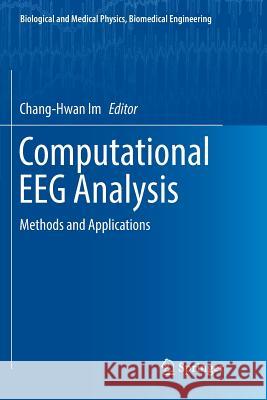Computational Eeg Analysis: Methods and Applications » książka
topmenu
Computational Eeg Analysis: Methods and Applications
ISBN-13: 9789811345296 / Angielski / Miękka / 2019 / 228 str.
Kategorie BISAC:
Wydawca:
Springer
Seria wydawnicza:
Język:
Angielski
ISBN-13:
9789811345296
Rok wydania:
2019
Wydanie:
Softcover Repri
Numer serii:
000380462
Ilość stron:
228
Waga:
0.34 kg
Wymiary:
23.39 x 15.6 x 1.3
Oprawa:
Miękka
Wolumenów:
01
Dodatkowe informacje:
Wydanie ilustrowane











